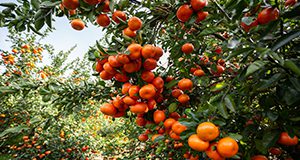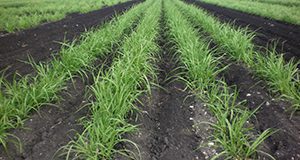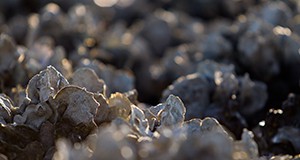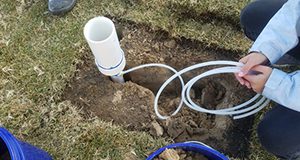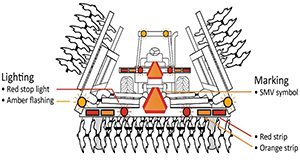The purpose of this report is to summarize ornamental plant producers' perceptions about neonicotinoid labeling and anticipated changes in production practices due to neonicotinoids labeling policy intervention. The target audience is industry, state agency, and public stakeholders involved in decisions and policy making related to the use of neonicotinoid insecticides in the U.S. ornamental plants industry.
https://edis.ifas.ufl.edu/fe1094
Category: Agriculture
The History of Offshore Aquaculture Governance in the Gulf of Mexico
Aquaculture is a growing industry in Florida, and there is particular interest in offshore marine aquaculture. While inland and coastal aquaculture (like for shellfish or ornamental fish) is managed by the Florida state agency Florida Department of Agriculture and Consumer Services (FDACS), offshore aquaculture also involves federal management agencies. However, there has been some confusion and disagreement about which federal agencies will manage and make decisions about offshore aquaculture in the United States. This document describes a recent history and current state of that discussion. This information is important for potential aquaculturists and other stakeholders to understand, and should also provide guidance to management and outreach agencies seeking to inform stakeholders about offshore aquaculture.
https://edis.ifas.ufl.edu/fa230
Microsoft Teams for CEU and Training Delivery
The Microsoft Teams collaboration platform is popular among UF/IFAS faculty, researchers, Extension agents, and staff for its ease of use and utility for internal and external communication, collaboration, and meetings. The Teams webinar feature called live events can be used for a more controlled experience for large meetings, events, or CEU delivery. This new 5-page article will discuss the benefits and possible limitations of this service, specifically for offering online CEU material that meets Florida Department of Agriculture and Consumer Services (FDACS) guidelines for such trainings. Written by Brett W. Bultemeier and Joe Gasper and published by the UF/IFAS Pesticide Information Office.
https://edis.ifas.ufl.edu/pi290
Building Bear Fences for Your Apiary
The American black bear is beloved, but it is also the most damaging vertebrate pest of honey bee apiaries in North America. That is in part because bears and beekeepers often share the same home territory. Many top beekeeping and pollination states also fall within the range of the American black bear. Can bears and beekeepers live in peace together? This 6-page fact sheet written by Kimberly K. Post and Cameron Jack and published by the UF/IFAS Entomology and Nematology Department details the basic steps for installing an electrified bear fence around a bee yard so that savvy beekeepers can protect hives and honey without harming honey-loving bears.
https://edis.ifas.ufl.edu/in1318
Optimizing Irrigation and Young Tree Management
Young citrus trees require optimal irrigation management for vigorous vegetative growth, leaf flushing, and establishment of a dense canopy. Poor irrigation practices, such as infrequent irrigation or irrigating without using irrigation scheduling tools, could be costly. Besides excessive loss of water and nutrients, the growth of young trees might be impacted by an excess or deficit of water. Crop water stress in young trees directly affects yield and fruit quality. This new 2-page publication of the UF/IFAS Department of Soil and Water Sciences, written by Davie Kadyampakeni and Sandra Guzmán, covers some strategies for optimizing young tree care and irrigation management to in turn optimize grove efficiency and productivity.
https://edis.ifas.ufl.edu/ss701
Quick Reference Guide to Postemergence Herbicides for Citrus Weed Control
This quick reference table will provide growers with information (suggested rates, use restrictions, etc.) on different herbicides used in citrus. The herbicide table, prepared based on the Florida Citrus Production Guide, will aid growers to select an appropriate postemergent herbicide program in citrus groves. Written by Ramdas Kanissery, Camille E. McAvoy, Jamie D. Burrow, Stephen H. Futch, Brent A. Sellers, and S. Shea Teems, and published by the UF/IFAS Horticultural Sciences Department.
https://edis.ifas.ufl.edu/hs1410
The Feasibility of Farmer-Led Cooperatives for Southwest Florida Farm to School Procurement
Florida's K–12 schools provide a potential opportunity to increase market channel options for small- and mid-sized diversified farms, but processing, storage, and distribution resources are extremely limited for smaller producers. This 9-page document serves as a model and case study with steps for producers and other stakeholders to conduct a feasibility study before forming a cooperative to sell local fruits and vegetables to schools and other institutional food-service outlets. Written by Jonathan Adam Watson, Danielle D. Treadwell, Catherine Campbell, and Ray Bucklin, and published by the UF/IFAS Department of Agricultural and Biological Engineering, March 2021.
https://edis.ifas.ufl.edu/ae555
Crop Management Practices and Labor Inputs for Hop Production in Florida
The booming craft beer industry, rising prices of hops, and demand for locally-produced ingredients have recently increased interest in local hop production among growers and brewers. This article describes crop management practices and labor inputs required for small-scale hop production in Florida, with the aim of assisting growers with investment and farm management decisions. It is part of a larger series that will review the challenges of hop production in Florida, based on research experience at the UF/IFAS Gulf Coast Research and Education Center in Balm, FL. This new 6-page publication of the UF/IFAS Horticultural Sciences Department was written by Shinsuke Agehara, Mariel Gallardo, Aleyda Acosta-Rangel, Zhanao Deng, Jack Rechcigl, Tianyuan Luo, and Qi Qiu.
https://edis.ifas.ufl.edu/hs1409
The Timber Value of an Existing Forest Stand
This 4-page publication presents a straightforward and intuitive approach based on compounding costs to determine the timber value of a forest at any stage of its development. Written by Andres Susaeta, and published by the UF/IFAS School of Forest, Fisheries, and Geomatics Sciences, March 2021.
https://edis.ifas.ufl.edu/fr435
Elderberry and Elderflower (Sambucus spp): Markets, Establishment Costs, and Potential Returns
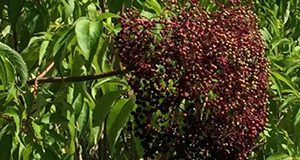
Elderberry is an alternative crop that holds promise for further commercial development in Florida. This 7-page fact sheet written by Kevin Athearn, David Jarnagin, Ali Sarkhosh, Juanita Popenoe, and Steven Sargent and published by the UF/IFAS Food and Resource Economics Department reviews information on markets for elderberries and elderflowers and estimates establishment costs and potential returns for a 3-acre elderberry orchard in Florida. The information is intended to assist farmers in evaluating elderberry as a possible alternative crop. Includes guidance on financial planning for an elderberry enterprise.
https://edis.ifas.ufl.edu/fe1093
2021 Guidelines for Purchasing and Using Commercial Natural Enemies and Biopesticides in North America
This 14-page guide written by Lynn M. LeBeck and Norman C. Leppla and published by the UF/IFAS Entomology and Nematology Department provides assistance in selecting, purchasing and using commercially available natural enemies and biopesticides for managing accurately diagnosed pest problems.
https://edis.ifas.ufl.edu/in849
Construcción del Sistema de Tutorado para Lúpulo y su Establecimiento en Florida
El lúpulo (Humulus lupulus L.) es un ingrediente esencial en la elaboración de cerveza, que agrega amargura y sabor a la cerveza. Impulsada por el reciente movimiento de la cerveza artesanal, la producción de lúpulo se está expandiendo hacia estados no tradicionales en la producción de lúpulo. En Florida, aunque la producción comercial de lúpulo es casi inexistente, la cantidad de cervecerías artesanales aumentó de 45 en 2011 a 285 en 2018, y el impacto económico de la industria de la cerveza artesanal en Florida supera los $3 mil millones. Este nuevo artículo de 7 páginas, escrito por Shinsuke Agehara, Aleyda Acosta-Rangel, Zhanao Deng, Jack Rechcigl y Simon Bollin, traducido por Mariel Gallardo y publicado por el Horticultural Sciences Department de UF/IFAS, proporciona pautas y consideraciones para construir el sistema de tutorado para lúpulo y su establecimiento en Florida, utilizando como modelo, el campo de investigación del UF/IFAS Gulf Coast Research and Education Center (GCREC).
https://edis.ifas.ufl.edu/hs1408
Terminating Cover Crops Effectively for Weed Suppression
When utilizing cover crops for weed suppression, one important consideration is effective termination before planting the main crop. A major issue with improper termination is that the cover crop can become problematic and compete with the main crop, like other weeds. However, proper planning of the termination timing and method can minimize these issues and maximize the benefits of cover crop use. This 5-page publication discusses herbicide application, roller-crimper termination, tillage, and appropriate growth stages for termination. Written by Pratap Devkota, Michael J. Mulvaney, and David Wright, and published by the UF/IFAS Agronomy Department, February 2021.
https://edis.ifas.ufl.edu/ag449
The Plant-Growth-Promoting Fungus, Mortierella elongata: Its Biology, Ecological Distribution, and Growth-Promoting Activities
Recent studies show that Mortierella elongata can perform plant-growth promotion across different types of crops, including bahiagrass, corn, tomato, squash, and watermelon. Compared to the well-known species that have plant-growth-promotion abilities (e.g., mycorrhizal fungi, Trichoderma), growers, agents, and stakeholders are not familiar with “Mortierella” despite the important role these fungal taxa play in promoting the growth of their crops. This new 5-page publication of the UF/IFAS Department of Soil and Water Sciences provides a brief overview of Mortierella from biological, taxonomical, ecological, and functional perspectives to help readers learn the biology and potential modes of action of this fungus. Written by Hui-Ling Liao.
https://edis.ifas.ufl.edu/ss679
Common Questions When Using Soil Moisture Sensors for Citrus and Other Fruit Trees
This guide is for Extension personnel who may encounter questions from growers about the functioning and accuracy of soil moisture sensors (SMSs) for fruit tree production. The 4-page publication focuses on two types of handheld sensors currently used in Florida for irrigation management of citrus and other trees: the transmission line oscillator (TLO) and time-domain transmissometer (TDT). Written by Eric Herrera, Sandra M. Guzmán, and Eduart Murcia, and published by the UF/IFAS Department of Agricultural and Biological Engineering, February 2021.
https://edis.ifas.ufl.edu/ae551
Abundance of Soil Insect Pests in Florida Sugarcane
This 6-page fact sheet written by Ron Cherry, Mabry McCray, Hardev Sandhu, and Michael Karounos and published by the UF/IFAS Entomology and Nematology Department is intended to inform sugarcane growers, scouts, pesticide applicators, and researchers about fluctuations of economically important sugarcane pests and implications for the management of those pests.
https://edis.ifas.ufl.edu/in1313
Insect Management for Onions, Leek, and Garlic
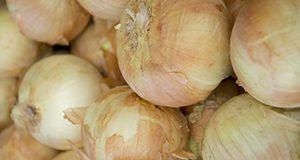
Sweet varieties of bulbing onions, which make bulbs under short day conditions and do not store well, are by far the most common onions grown in Florida. They are generally grown on small acreages in the winter for local and farmers markets. In Hillsborough County and in the Suwannee Valley, strawberry growers are the major producers of onions, many of which are harvested green. This 2-page fact sheet written by Xavier Martini and Susan Webb and published by the UF/IFAS Entomology and Nematology Department reviews the management of the two major onion pests in Florida: thrips and seedcorn maggot.
https://edis.ifas.ufl.edu/ig153
Oyster-Predator Dynamics and Climate Change
Oysters are one of the most important natural resources found in coastal and estuarine areas of Florida, but some Florida oyster populations appear to be declining. One possible driver of oyster population decline is increased mortality from oyster predators, including marine snails. But other environmental factors, such as changes in temperature or salinity, may also affect oysters. This 5-page fact sheet written by Gabrielle Love, Shirley Baker, and Edward V. Camp and published by the UF/IFAS School of Forest Resources and Conservation, Program in Fisheries and Aquatic Sciences describes how a changing climate may affect oysters directly but also indirectly by affecting their predators.
https://edis.ifas.ufl.edu/fa228
Design, Construction, and Installation of a Drainage Lysimeter for Use on Sandy, Well-Drained Soils under Turfgrass
Using lysimeters to collect water quality samples can provide a better understanding of nutrient or other solute migration below the surface, which can inform landscape management for environmental protection. This 6-page publication presents the materials, construction, installation, and management of a specific drainage lysimeter design in a step-by-step format. Written by Jovana Radovanovic, Eban Z. Bean, and Alexander J. Reisinger, and published by the UF/IFAS Department of Agricultural and Biological Engineering, February 2021.
https://edis.ifas.ufl.edu/ae554
Lighting and Marking of Agricultural Equipment on Highways: Summary of ASAE Standard S279.18
Agricultural vehicles on public roads can pose risks to their drivers and to drivers of other vehicles. Proper lighting and marking increase visibility of the farm equipment. This 6-page publication summarizes agricultural equipment lighting and marking standards. Written by Serap Gorucu, Charles Brown, and Carol Lehtola, and published by the UF/IFAS Department of Agricultural and Biological Engineering, revised February 2021.
https://edis.ifas.ufl.edu/ae175

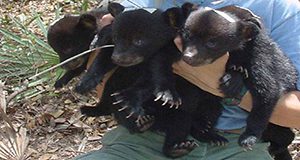
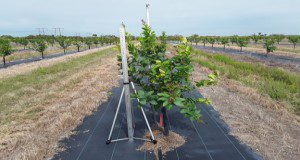
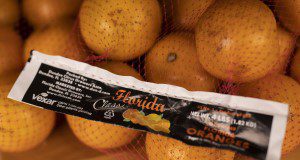
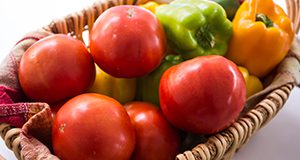
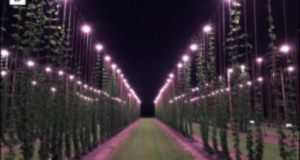

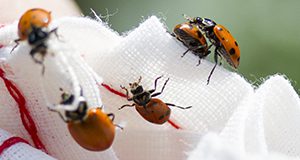
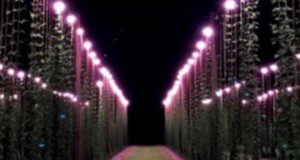
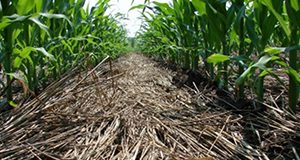
![Growth enhancement of loblolly pine (<i>Pinus taeda</i>) in response to inoculation of <i>M. elongata</i> (Isolate PMI93). After inoculation, seedlings of <i>P. taeda</i> were grown in sterile sand or natural soil systems (30% soil collected from <i>P. taeda</i> forest, Durham, NC, mixed with 70% sterile sand [w/w]) for 10 months. Credits: Hui-Ling Liao, UF/IFAS](https://edis-news.ifas.ufl.edu/wp-content/uploads/2021/03/ss679-300x160.jpg)
